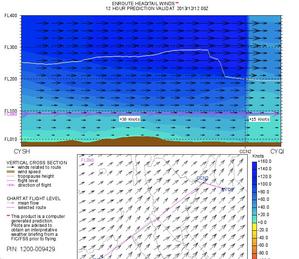Snow
- Details
- Written by Kevin Horton
- Hits: 2993
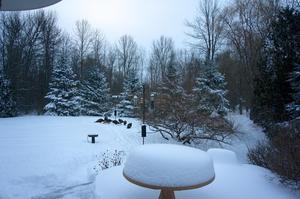 We had the first major winter storm of the season over the last two days. We got about 8" of snow here at home. The airport web cam showed snow clearing in progress this afternoon, so hopefully the airport will be operational on Monday. I’ve got a day off on Monday, so I’ll head out to clear the snow from in front of the hangar, and maybe go flying.
We had the first major winter storm of the season over the last two days. We got about 8" of snow here at home. The airport web cam showed snow clearing in progress this afternoon, so hopefully the airport will be operational on Monday. I’ve got a day off on Monday, so I’ll head out to clear the snow from in front of the hangar, and maybe go flying.
Big Winds at Altitude!
- Details
- Written by Kevin Horton
- Hits: 3023
Today would have been a great day to be flying east to visit my folks in Yarmouth, at least as far as the winds go - over 35 kt tailwind at 9000 ft, and if we donned the oxygen masks and climbed up to 17,000 ft we’d have almost 80 kt tailwind. Predicted enroute time of 2:10 at 17,000 ft for the 464 nm flight to Yarmouth. Wow! It would be a long flight westbound though - 3:40 home, at 8,000 ft.
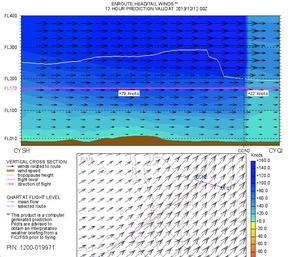 Winds at 17,000 ft.
Winds at 17,000 ft.
First Snowy Flight
- Details
- Written by Kevin Horton
- Hits: 3038
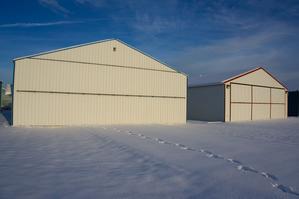 Last weekend the weather was lousy, so I didn’t get flying. But yesterday morning was acceptable, if cold, so I took advantage. It was the first real cold day this winter flying season, with a temperature of about –14°C at engine start. But first, I had to clear a bunch of snow from in front of the hangar, which meant I really hoped to get the snow blower to start, probably for the first time since last winter. Fortunately it has an electric starter, powered by an extension cord plugged into 120 VAC. It took a lot of cranking, but I finally got it to run. I was very happy that it didn’t have a pull starter, as I’d have been close to dead by the time it got going.
Last weekend the weather was lousy, so I didn’t get flying. But yesterday morning was acceptable, if cold, so I took advantage. It was the first real cold day this winter flying season, with a temperature of about –14°C at engine start. But first, I had to clear a bunch of snow from in front of the hangar, which meant I really hoped to get the snow blower to start, probably for the first time since last winter. Fortunately it has an electric starter, powered by an extension cord plugged into 120 VAC. It took a lot of cranking, but I finally got it to run. I was very happy that it didn’t have a pull starter, as I’d have been close to dead by the time it got going.
 The flight itself was short, dedicated to a few aerobatics, and two landings. The engine puts out a lot more power in the cold air, and I used it to do some vertical eights (picture two balls, one on top of the other).
The flight itself was short, dedicated to a few aerobatics, and two landings. The engine puts out a lot more power in the cold air, and I used it to do some vertical eights (picture two balls, one on top of the other).
Hypoxia Demos
- Details
- Written by Kevin Horton
- Hits: 2587
Last week was a good week. Wednesday several of us flew to Winnipeg in one of Transport Canada’s C550s to do a day of AeroMedical Training on Thursday, at the Canadian Forces School of Survival and AeroMedical Training (CFSSAT). The highlight, and the whole reason we went, were the hypoxia demonstrations in the pressure chamber. We do quite a bit of flying in pressurized aircraft at high altitude, and there is always a risk of a loss of cabin pressure. Thus it is very smart to be familiar with your personal hypoxia symptoms, to increase the odds that you will recognize the situation and don the oxygen mask before it is too late.
In the past, the hypoxia demos were done at 25,000 ft or 43,000 ft cabin altitude in the pressure chamber. Large vacuum pumps reduce the pressure in the pressure chamber to produce a cabin pressure that is equivalent to the low pressure found at altitude. The human body is not designed for such low pressures, and there is a real risk of decompression sickness at 25,000 ft and above if this altitude is reached quickly, caused by nitrogen coming out of solution and forming bubbles in the body. CFSSAT has changed their training protocol since I was there last - now the hypoxia demos are done at 10,000 ft cabin altitude, with the training wearing a mask and breathing a gas mix which is 10% oxygen and 90% nitrogen, vs the normal 21% oxygen, 78% nitrogen and 1% other gasses. The combination of higher altitude and lower oxygen percentage is equivalent to 25,000 ft. This new protocol is much easier on the body.
I learned that my hypoxia symptoms have changed slightly as I aged. In the past, the first sign was always a tingling sensation on the back of my palms, followed by a feeling of confusion as the brain started to be starved of oxygen. We each did two hypoxia events on Thursday, and in both cases the first noticeable symptom was confusion - no tingling of the hands either time.
Friday we flew home. Only two of us were qualified on the C550, so I was up front on both Wednesday and Thursday.
Saturday morning I did a short flight in the RV–8 to warm up the engine, then I pulled the cowlings to check the cylinder compression, check the ignition timing, etc, as part of the annual inspection. No major issues were noted.
Short Flight, Fuel Tank Leak :(
- Details
- Written by Kevin Horton
- Hits: 3305
The weather last weekend was not great, so I didn’t get flying. But today was quite nice, so I took full advantage.
When I was cleaning the bugs off after the flight, I noted a bit of oil on the belly. I’ll have to pull the cowlings again to check to see if I have an oil leak.
When I was under the belly cleaning off the little bit of oil, I saw a line of blue fuel dye going back along the bottom wing skin from the inboard end of the right fuel tank. The dye stain came off easily, so I suspect it was probably from today’s flight. I had noted signs of a tiny fuel leak in early 2013, and had been watching this area. It looked like it had stopped for a long time, then a few months ago I started seeing hints of blue dye if I removed the intersection fairing so I could see the end of the fuel tank. But now I can see it on the wing itself, so it must be getting worse. I’ll have to pull the tank off soon so I can deal with it. Drat.
Fall Leaves, Yet Again
- Details
- Written by Kevin Horton
- Hits: 3366
We’re at the end of the colourful fall leaves season. The leaves in this area are mostly on the ground, but I noted when driving back from Montreal on Thursday that there were still many leaves left in Quebec. Terry and I hoped to fly to Trois-Rivières for lunch today, but we had a cold front go through, and the winds were gusting to 30 kt in that area this morning. There was also much more low cloud up there than expected, which meant that we wouldn’t get to see many of the leaves. Lunch plans - cancelled.
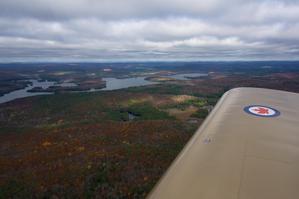 I went flying anyway, as it was a nice day in this area, but windy. Terry wouldn’t enjoy getting bounced around in the bumps, so I went solo. I headed east from Smiths Falls, at 2000 ft, below a broken layer of cloud, and went counter clockwise around Ottawa. There were still a few red leaves hanging on in Gatineau Park, north of Ottawa. This will be the last fall leave viewing flight, as the high winds will certainly put many of the remaining ones on the ground.
I went flying anyway, as it was a nice day in this area, but windy. Terry wouldn’t enjoy getting bounced around in the bumps, so I went solo. I headed east from Smiths Falls, at 2000 ft, below a broken layer of cloud, and went counter clockwise around Ottawa. There were still a few red leaves hanging on in Gatineau Park, north of Ottawa. This will be the last fall leave viewing flight, as the high winds will certainly put many of the remaining ones on the ground.
